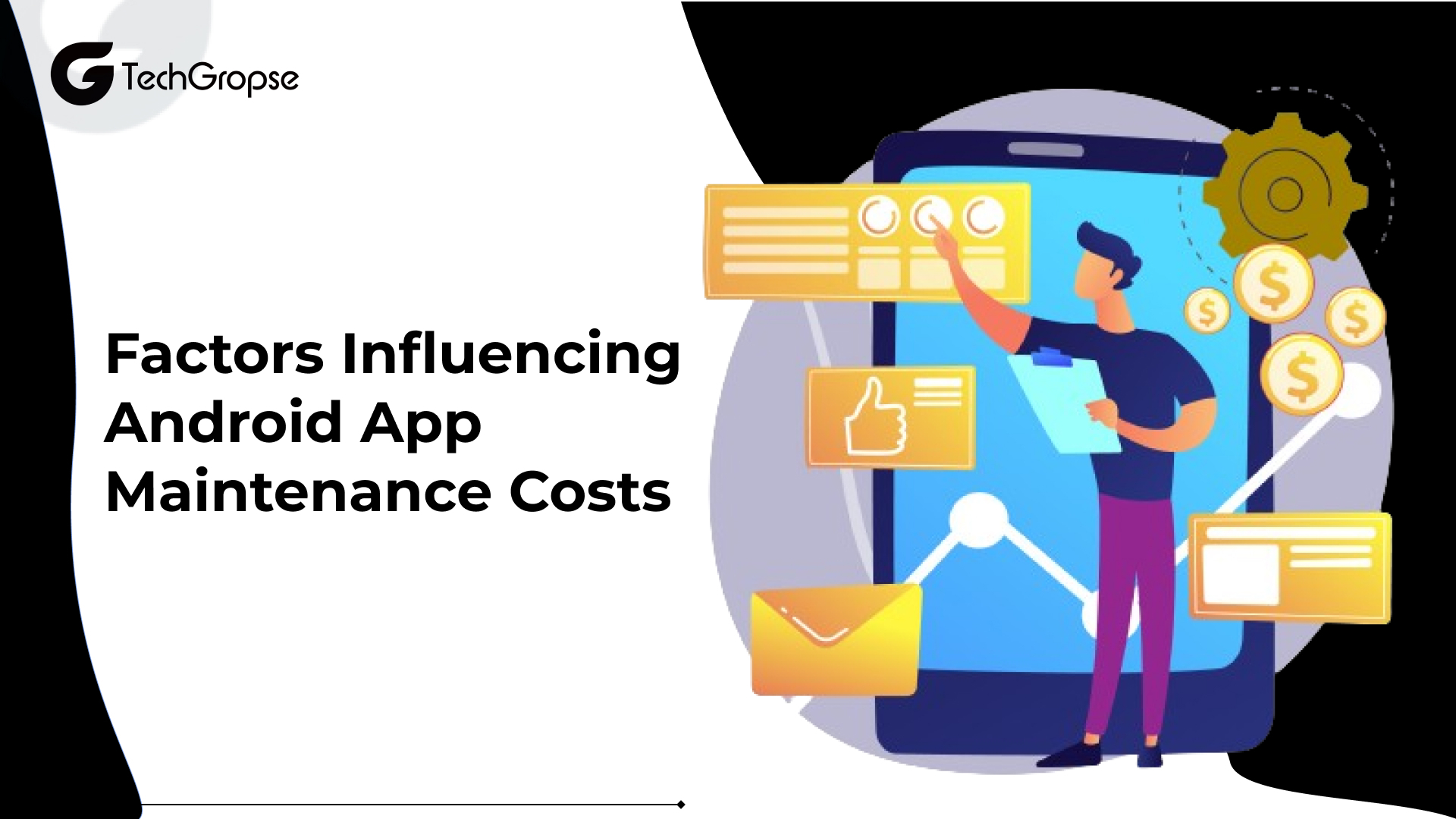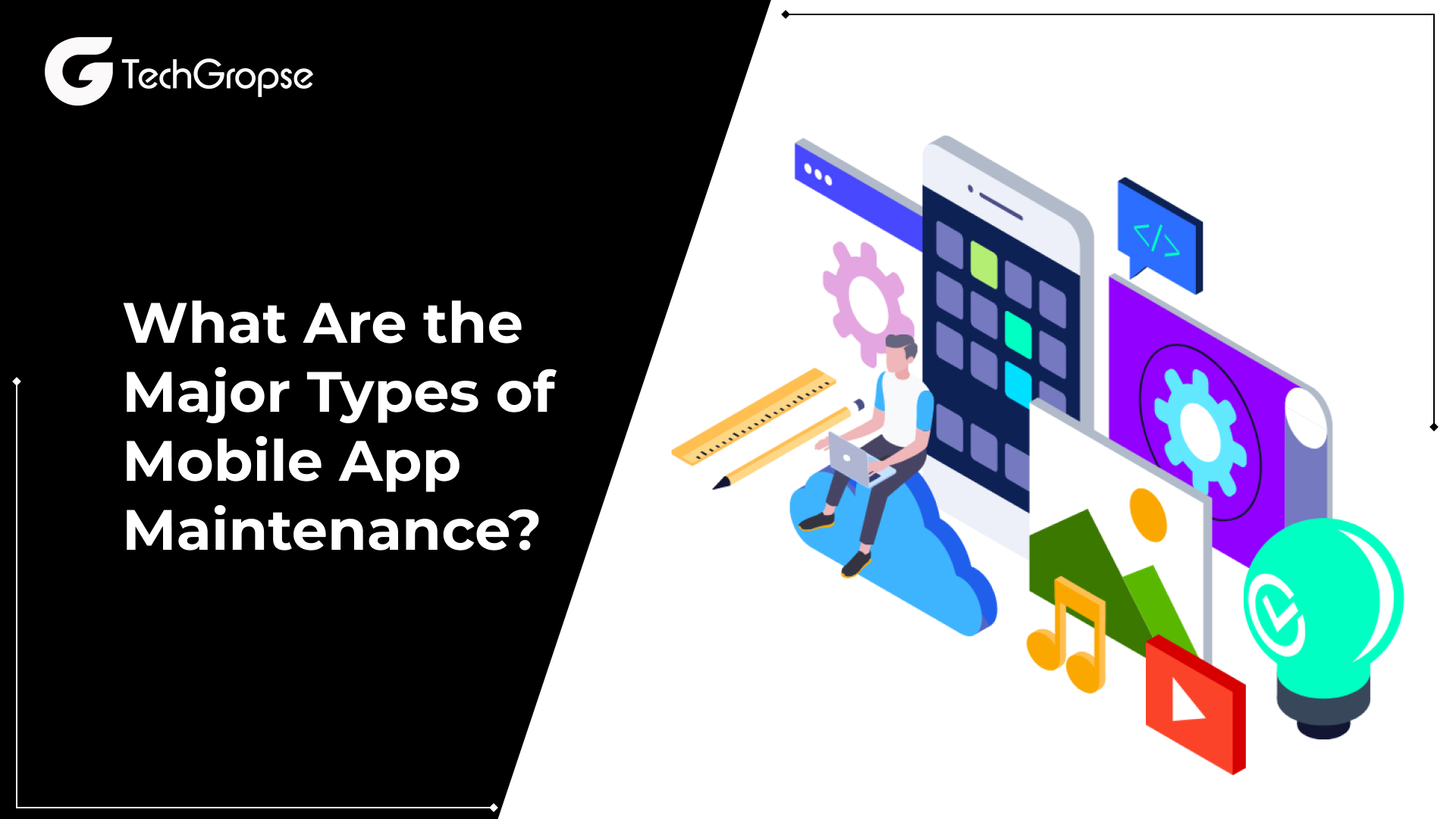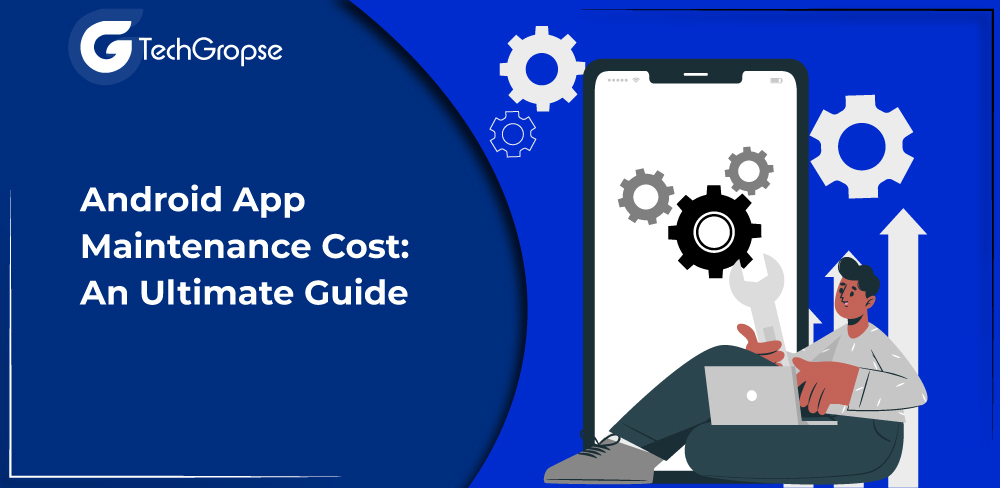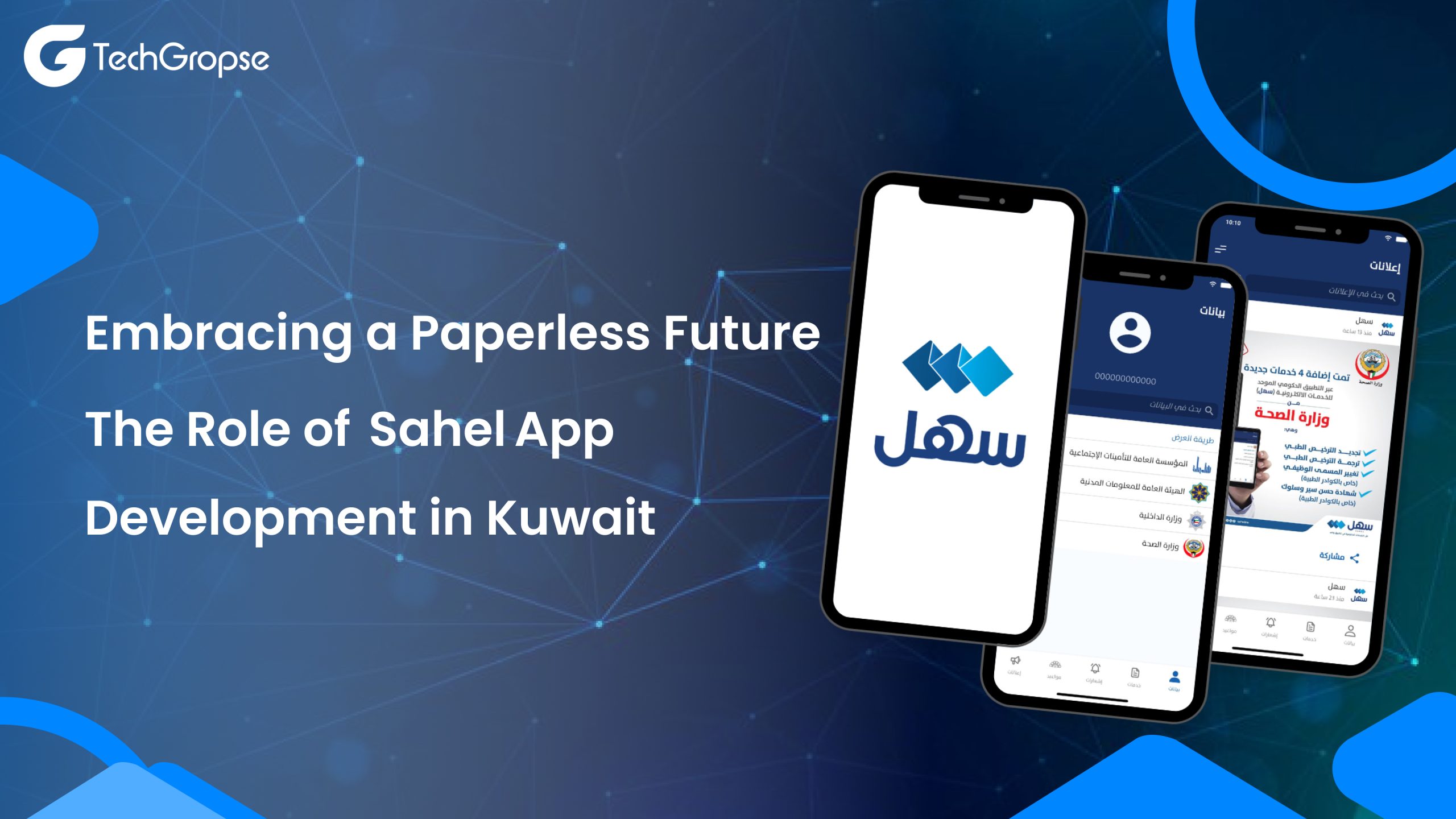So, you’ve built your awesome Android app and launched it into the digital wilderness. Now, it’s time to talk about the less glamorous but equally important aspect: Android app maintenance cost.
You’ve been promoting it for a while now, and it’s officially available on the App Store and Play Store (maybe even both!).
People are downloading your app and using it.
But hold on, is that all there is to it?
No way!
The next important step is to keep up with maintaining your app. The more downloads you get, the more upkeep it will require.
And, of course, you want as many people as possible to download your app, right? According to a study by Gartner, a whopping 77% of apps fail because they aren’t properly maintained after they are launched.
That’s a big number, isn’t it?
So, here’s the big question: what is an Android app maintenance cost?
As we know, mobile apps are important for billions of people who use smartphones worldwide. In the US alone, there will be 311 million smartphone users by 2025.
These apps are essential for shopping online, making and sharing incredible stuff, talking to friends, playing games, and finding out all types of information.
Let’s dive into why app maintenance is crucial for your app’s success and explore the key components that make up these costs.
Why is App Maintenance So Essential?
App maintenance is essential for ensuring security, fixing bugs, optimizing performance, maintaining compatibility, complying with regulations, enhancing user engagement, and ensuring the long-term success and sustainability of the app in a competitive market landscape.
App maintenance is essential for several reasons:
1. Security Updates
Regular maintenance helps to address security vulnerabilities and threats, ensuring that the app remains protected against cyber attacks, data breaches, and other security risks. By promptly applying security patches and updates, hire mobile app developers who can mitigate potential security loopholes and safeguard sensitive user information.
2. Bug Fixes and Performance Optimization
Over time, users may encounter bugs, glitches, or performance issues while using the app. Maintenance enables developers to identify and fix these issues promptly, enhancing the app’s stability, functionality, and user experience. Connect with a mobile app development company to ensure that the app performs efficiently across different devices, operating systems, and network conditions.
3. Compatibility with OS and Devices
Operating systems (OS) and device hardware undergo frequent updates and advancements. App maintenance involves ensuring compatibility with the latest OS versions, device models, screen sizes, and resolutions. By staying up-to-date with technological developments, developers can prevent compatibility issues and ensure seamless user experiences across various platforms.
4. Regulatory Compliance
In highly regulated industries like fintech, healthcare, and e-commerce, apps must comply with stringent regulatory standards and data protection laws. Maintenance involves monitoring regulatory changes and implementing necessary updates to ensure ongoing compliance with relevant regulations. Failure to comply with regulatory requirements can lead to legal consequences, fines, and reputational damage.
5. User Engagement and Retention
Regular updates and feature enhancements keep the app fresh, engaging, and relevant to users. By listening to user feedback, analyzing usage patterns, and incorporating new features or improvements based on user preferences, developers can enhance user satisfaction and retention rates. Consistent updates also demonstrate the app’s commitment to providing value and maintaining a competitive edge in the market.
6. Long-Term Success and Sustainability
App maintenance is integral to the product’s long-term success and sustainability. By investing in ongoing support and maintenance, businesses can extend the app’s lifecycle. You should hire dedicated developers who are aware of user needs and market trends and stay ahead of competitors. A well-maintained app is more likely to retain users, attract new customers, and generate positive reviews and recommendations, contributing to its overall success and profitability.
How Much Does Android App Maintenance Cost?
| Maintenance Activity | Estimated Cost Range |
| Security Updates | $1,000 – $5,000 per year |
| Bug Fixes and Technical Support | $2,000 – $10,000 per year |
| Compatibility Updates | $1,000 – $5,000 per year |
| Performance Optimization | $1,000 – $5,000 per year |
| Feature Enhancements | $2,000 – $10,000 per year |
| Regulatory Compliance Updates | $2,000 – $10,000 per year |
| Total | $9,000 – $45,000+ per year |
These estimates are approximate and can vary based on factors such as the app’s complexity, the frequency of updates, the specific maintenance requirements, and the rates charged by developers or development teams.
It’s essential to discuss with the Android app development company to allocate a sufficient budget for app maintenance to ensure the continued reliability, security, and performance of the Android app over time.
Additionally, proactive maintenance can help prevent issues and minimize custom mobile app maintenance costs associated with reactive fixes.
Factors Influencing Android App Maintenance Cost

Several factors influence the cost of Android app maintenance. Understanding these factors is crucial for effectively budgeting and planning your app maintenance strategy.
Here are some key factors to consider:
1. App Complexity
The complexity of your app plays a significant role in determining Android app maintenance costs. Complex apps with extensive features, advanced functionalities, and intricate codebases typically require more maintenance efforts and resources compared to simpler apps.
2. Size of User Base
The size and growth of your user base can impact Android app maintenance costs. As your app gains popularity and attracts more users, you may need to allocate additional resources for handling increased traffic, addressing user feedback, and scaling infrastructure to meet growing demand.
3. Frequency of Updates
Regular updates are essential for keeping your app relevant, competitive, and secure. The frequency of updates, including bug fixes, feature enhancements, and compatibility updates, can influence Android app maintenance costs. More frequent updates may require higher ongoing investment in development, testing, and deployment.
4. Third-Party Dependencies
If your app relies on third-party libraries, APIs, or services, you may incur additional maintenance costs associated with managing and updating these dependencies. Changes or discontinuations in third-party services may necessitate modifications to your app, impacting maintenance expenses.
5. Platform Changes
Android platform updates, new device releases, and changes in Google Play Store policies can affect your app’s compatibility, performance, and compliance requirements. Staying up-to-date with platform changes and implementing necessary updates may incur additional maintenance costs.

6. Security Considerations
Ensuring the security of your app and protecting user data are paramount. Implementing security measures, conducting regular security audits, and addressing vulnerabilities contribute to maintenance costs. Failure to prioritize security can result in costly data breaches and reputational damage.
What are the Best Practices for Mobile App Maintenance?
Effective mobile app maintenance is crucial for ensuring the continued success and reliability of an application. Here are some best practices for mobile app maintenance:
1. Regular Updates
Schedule regular updates to address bug fixes, security vulnerabilities, performance issues, and compatibility issues. Keeping the app up-to-date helps maintain its functionality, security, and usability.
2. Proactive Monitoring
Implement monitoring tools and processes to proactively identify and address issues before they impact users. Monitor app performance, usage patterns, and error logs to detect anomalies and trends.
3. User Feedback
Encourage users to provide feedback and report issues through app reviews, ratings, and support channels. Actively listen to user feedback and prioritize addressing issues and implementing requested features based on user needs and preferences.
4. Testing
Conduct thorough testing of app updates and new features across various devices, operating systems, and network conditions to ensure compatibility, functionality, and performance. Automated testing tools and manual testing procedures can help identify and resolve issues before deployment.
5. Security Measures
Prioritize security by implementing robust security protocols, encryption mechanisms, authentication mechanisms, and data protection measures to safeguard sensitive user information and prevent unauthorized access or data breaches.
6. Compliance Updates
Stay informed about regulatory requirements, industry standards, and best practices relevant to your app and ensure compliance through regular updates and adjustments. This includes data protection laws, accessibility standards, and industry-specific regulations.
7. Performance Optimization
Continuously optimize app performance by analyzing and optimizing code, reducing loading times, minimizing resource consumption, and improving overall user experience. Regular performance audits and optimizations help ensure that the app remains fast, responsive, and efficient.
8. Backup and Recovery
Implement backup and recovery mechanisms to protect user data and ensure business continuity in the event of data loss, system failure, or security incidents. Regularly backup app data and test data recovery procedures to verify their effectiveness.
9. Documentation and Knowledge Sharing
Maintain comprehensive documentation detailing app architecture, codebase, dependencies, configurations, and processes. This facilitates knowledge sharing among team members, streamlines troubleshooting, and ensures continuity in case of personnel changes.
10. Version Control
Utilize version control systems such as Git to manage code changes, track revisions, and collaborate effectively with team members. Version control ensures that changes are documented, reversible, and traceable, facilitating efficient collaboration and code management.
What Are the Major Types of Mobile App Maintenance?

By categorizing mobile app maintenance into these major types, businesses can develop a comprehensive maintenance strategy.
It addresses various aspects of app stability, functionality, security, and user satisfaction, ensuring mobile applications’ long-term success and competitiveness.
1. Corrective Maintenance
Also known as bug fixes or reactive maintenance, involves addressing issues and defects discovered after the app has been deployed. Corrective maintenance aims to fix bugs, errors, crashes, or other issues reported by users or identified through testing.
2. Adaptive Maintenance
Adaptive maintenance involves changing the app to adapt to changes in the external environment, such as updates to operating systems, devices, or third-party dependencies. This type of maintenance ensures that the app remains compatible and functional in evolving technological landscapes.
3. Perfective Maintenance
It focuses on enhancing and improving existing features and functionalities to meet evolving user needs, preferences, and business requirements. This may involve adding new features, optimizing performance, refining user interfaces, or improving user experiences.
4. Preventive Maintenance
Also known as proactive maintenance, preventive maintenance aims to prevent future issues and improve the app’s overall reliability and stability. It may include implementing security measures, optimizing code, conducting performance audits, and enhancing scalability to mitigate potential risks and vulnerabilities.
5. Emergency Maintenance
It involves addressing critical issues or emergencies that require immediate attention to restore the app’s functionality and prevent significant disruptions or losses. It may include resolving security breaches, data leaks, server outages, or other high-priority incidents.
5 Budgeting Tips for Android App Maintenance
Budgeting for Android app maintenance requires careful planning and consideration of various factors.
Here are some tips to help you budget effectively for Android app maintenance costs:
1. Allocate a Contingency Fund
It sets aside a contingency fund for unexpected maintenance expenses, such as emergency fixes, platform changes, or security breaches. Having a buffer can help mitigate financial risks and ensure that you’re prepared for unforeseen challenges.
2. Prioritize Maintenance Tasks
Prioritize maintenance tasks based on their impact on app performance, user experience, and security. Focus on addressing critical issues and implementing essential updates that deliver the most value to your users.
3. Estimate Costs Conservatively
When estimating maintenance costs, err on the side of caution and estimate expenses conservatively. Consider factors such as development hours, testing efforts, third-party dependencies, and potential unforeseen challenges to arrive at realistic cost estimates.
4. Invest in Automation and Tools
Invest in automation tools, monitoring systems, and development frameworks that streamline maintenance processes and reduce manual effort. Automation can improve efficiency, reduce mobile app development costs, and accelerate the delivery of updates and fixes.
5. Monitor and Analyze Expenses
Monitor and analyze your app maintenance expenses regularly to identify trends, optimize resource allocation, and identify opportunities for Android app maintenance cost savings. Track spending, review budget variances, and adjust your maintenance strategy as needed to stay within budgetary constraints.
Future Trends in Android App Maintenance Cost Management
1. AI and Machine Learning in App Maintenance
Imagine a world where AI and machine learning algorithms can predict and prevent maintenance issues before they even occur. In this section, we explore how these cutting-edge technologies are revolutionizing the way we manage Android app maintenance costs, making our lives as developers a whole lot easier.
2. Predictive Maintenance Models
Gone are the days of waiting for something to break before fixing it. Predictive maintenance models use historical data and machine learning to predict when maintenance is needed, saving time and money in the long run. Join us as we delve into how these models are reshaping the landscape of Android app maintenance cost management.
3. Cost Optimization through Iterative Development
It is like sculpting a masterpiece – you start with a rough outline and gradually refine it until it’s perfect. In this section, we explore how adopting an iterative approach to development can help optimize Android app maintenance costs by catching issues early on and preventing costly reworks down the line. So, grab your chisel, and let’s sculpt your app into a cost-effective masterpiece!
How Does TechGropse Help in Mobile App Maintenance?
App maintenance services are vital for ensuring that businesses can consistently provide their customers with mobile applications that are scalable, adaptable, and secure. At TechGropse, we follow the best practices for mobile app maintenance to help our clients stay up-to-date with the latest technological and business advancements.
Our team consists of experienced maintenance engineers, quality analysts, and testers who are well-versed in the latest technologies. As a leading mobile app development company, we specialize in redesigning and optimizing mobile applications to meet our clients’ specific business needs.
Our mobile app maintenance services cover a wide range of operating systems and devices. We take care of essential tasks such as fixing bugs, managing development environments, and maintaining servers.
Whether you have a brand new app or a legacy one, we have the expertise to upgrade and modernize it according to your requirements.
Don’t hesitate to get in touch with us to learn more about how we can help you enhance and maintain your mobile app.
FAQ: Android App Maintenance Cost
1. Why is it important to consider app maintenance costs for Android apps?
Regular maintenance is essential for ensuring that Android apps remain functional, secure, and user-friendly. Ignoring maintenance can lead to performance issues, security vulnerabilities, and compatibility problems with new devices and operating system updates.
2. How can businesses estimate and budget for Android app maintenance costs?
Businesses can estimate maintenance costs by considering factors such as app complexity, the frequency of updates, ongoing support requirements, and the availability of in-house resources. Budgeting for maintenance costs involves allocating resources for regular updates, bug fixes, performance monitoring, and potential enhancements.
3. What tools and resources can help streamline Android app maintenance processes?
There are various tools and resources available to streamline app maintenance, including automated testing tools, bug-tracking systems, performance monitoring platforms, and project management software. These tools can help developers and businesses efficiently manage maintenance tasks, track issues, and ensure the overall health of their Android apps.

Hello All,
Aman Mishra has years of experience in the IT industry. His passion for helping people in all aspects of mobile app development. Therefore, He write several blogs that help the readers to get the appropriate information about mobile app development trends, technology, and many other aspects.In addition to providing mobile app development services in USA, he also provides maintenance & support services for businesses of all sizes. He tried to solve all their readers’ queries and ensure that the given information would be helpful for them.










